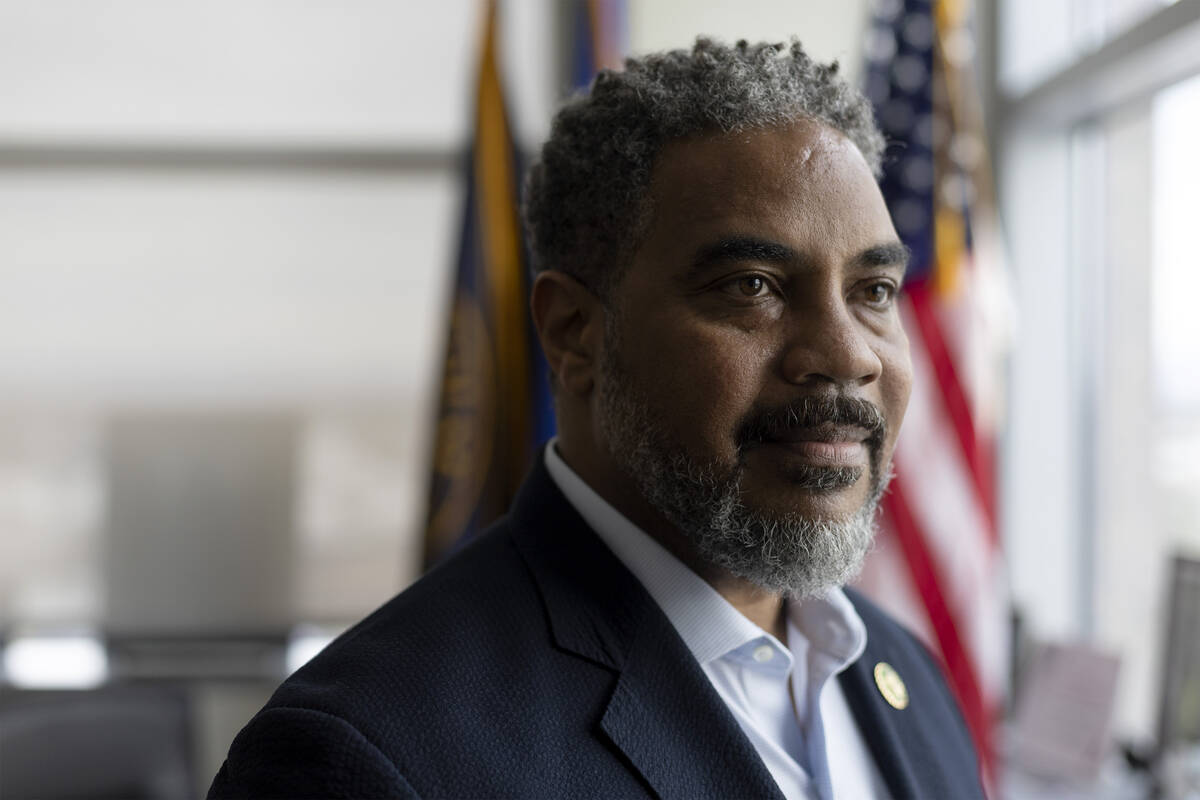Horsford leads House Democrat coalition in tax reform plan
Rep. Steven Horsford, D-Nev., led House Democrats in creating their own tax plan as an alternative to Republicans’ “big, beautiful bill” on the table.
The New Democrat Coalition, a center-left group of 115 members of House Democrats that includes Horsford and Nevada Rep. Susie Lee, unveiled the tax framework this week, and Horsford was selected by the chair to head its tax and economic prosperity framework.
Horsford said Republicans’ plan, which is currently in the Senate, includes tax breaks for corporations, Medicaid cuts and the addition of $3 trillion to the federal debt. Democrats can’t just be opposed to it; they have to propose alternative solutions, he said.
That’s what this plan offers, he said.
The Las Vegas Review-Journal talked with Horsford on Friday about what is included in the plan, the likelihood of it coming to fruition and why it matters. Here is the discussion, edited for brevity.
Q: What does the tax plan look like? What are the highlights?
A: Our new Democratic coalition proposal is a three-pillar strategy to reorient tax policy around working families first, small businesses and long-term economic resilience for working families and children.
We’re talking about extending and expanding the Child Tax Credit, permanently updating the child Dependent Care Tax Credit. This is dealing with child care deductions at a time when families in Nevada are spending upwards of 17 percent of their monthly income on child care. This provision would allow them to deduct those costs while we work to make it more affordable.
We have a housing affordability crisis in Nevada. Our plan strengthens the Low Income Housing Tax Credit and extends the enhancement for the Affordable Care Act premium tax credits to keep health care costs affordable.
RELATED — Debra J. Saunders: One Big Beautiful Bill — with a due date
Q: Are there any similarities with your plan and the Republicans’ plan?
A: So the similarities are that if we just focused on working families by lifting more children out of poverty through the child tax credit, by supporting small businesses and entrepreneurs, by promoting long-term growth, we could actually have a bipartisan plan that could pass Congress and be signed by the president.
Q: Why did Democrats put this plan forward, knowing that they’re in the minority party? What’s the end goal?
A: Well, I think it’s important not to just talk about what we’re against. It’s important to also say what we’re for. I’m for permanent tax cuts for moms and dads and working people in Nevada. I am for helping more small businesses get the deductions that they need to start and to grow a business. I’m for expanding tax incentives for housing development in Nevada and across the country and my district, and the constituents in it want to know what our ideas are, what our solutions are — not just what we’re against.
Q: What’s the likelihood of this plan being adopted?
A: Well, we will see. Look, the Senate is having quite a hard time getting their “one big, beautiful” partisan bill through the Senate. It’s now Friday afternoon. There’s no projection or prediction how long it’s going to take them to even vote on a version of the bill, or if they even have the votes to pass it.
When and if that fails, we’re ready with a plan that centers the needs of working families, that supports small businesses and entrepreneurs, and that actually helps to grow our economy.
Q: Does this plan have anything to do with the 2026 election?
A: No, this is about what Congress should be doing right now. The next election has nothing to do with the “one big, beautiful bill” that’s before the Congress today.
This is a clear proposal that is not moderate, not progressive. It’s just a better plan, one that would receive bipartisan votes.
Q: Nevada’s governor recently vetoed a paid family leave bill, but your plan proposes tax credits for paid family and medical leave. Could you talk more about how that would work in practice?
Yeah, so for small businesses and entrepreneurs, it would ensure that the 45-S employer-paid family and medical leave tax credit is utilized by small businesses and prioritizes for those who were not previously provided paid leave to their employees.
So by creating this incentive to small businesses, we can actually incorporate more of these tax advantages. In Nevada, we know that 90 percent of our business enterprises are actually small businesses. The more that we can incentivize them to bring these types of benefits for their employees and receive the tax advantage, that’s how you change behavior.
This is about helping families when they have a birth of a new child, a sick loved one, when you need to take time off because of someone in your family being ill. Employer-paid family and medical leave should not be a partisan issue if you really support middle class families and the struggles that they’re facing.
Contact Jessica Hill at jehill@reviewjournal.com. Follow @jess_hillyeah on X.



















